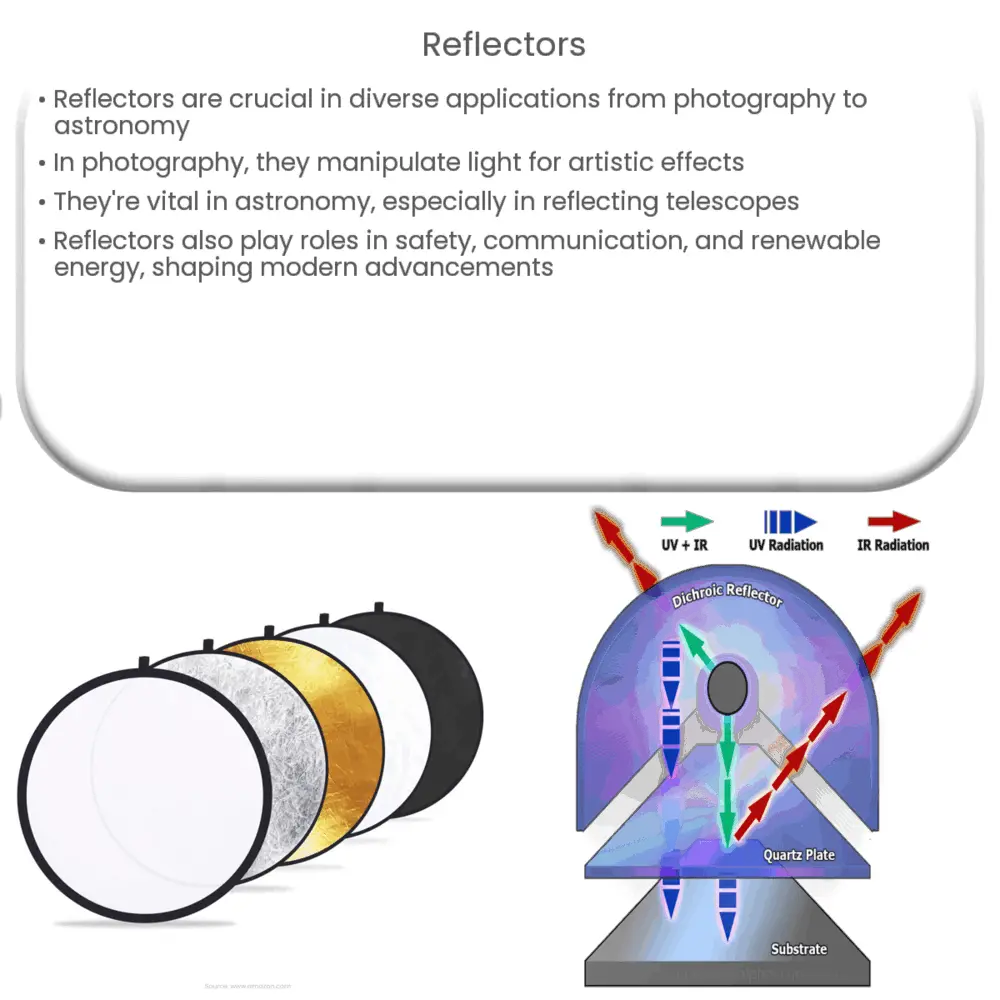Explore the diverse applications of reflectors in photography, astronomy, safety, communication, and renewable energy.

An Introduction to Reflectors
Reflectors, an instrumental part of various scientific, technological, and everyday applications, fundamentally work by reflecting light or other forms of electromagnetic waves. Their functionality is vital in industries ranging from photography to astronomy, and even in safety devices.
Reflectors in Photography
In the world of photography, reflectors play a significant role. Photographers frequently employ them to manipulate light and to illuminate the subjects of their photographs more evenly or artistically. These devices essentially bounce off the existing light, be it natural sunlight or artificial light, towards the subject, reducing shadows and highlighting details.
- White reflectors: These provide softer, diffused light, ideal for portraits.
- Silver reflectors: They offer highly reflective surfaces, creating a strong, somewhat harsh light.
- Gold reflectors: These give a warm golden hue, often used for sunrise or sunset effects.
Reflectors in Astronomy
Reflectors are not exclusive to the realm of photography; they also find remarkable use in the field of astronomy, particularly in reflecting telescopes. These telescopes operate by using a large concave mirror (primary mirror) to gather and focus light. This primary mirror reflects the light to a secondary mirror, which in turn, reflects the light to the eyepiece.
- Newtonian reflectors: Invented by Sir Isaac Newton, this telescope design uses a flat secondary mirror that reflects light to the side of the telescope, where the eyepiece is located.
- Cassegrain reflectors: This design employs a secondary mirror that reflects light back through a hole in the primary mirror, allowing for a compact and portable telescope design.
Reflectors in Safety
The role of reflectors in our daily life is more pronounced than we may realize. They are embedded in various safety devices, most notably in traffic management systems. Road reflectors, also known as cat’s eyes, play a crucial role in guiding night-time traffic. Similarly, cyclists and pedestrians often use reflective clothing or accessories to increase visibility during low light conditions.
Reflectors in Communication
Modern communication systems also leverage the power of reflectors. They play a significant role in satellite communication, where parabolic dish antennas, acting as reflectors, focus electromagnetic waves to a single point. This enables efficient reception and transmission of data signals, making high-speed internet and satellite television possible.
- Direct broadcast satellites (DBS): These make use of high-power reflector antennas to deliver television signals directly to the home, providing a broad spectrum of channels.
- Internet satellites: Satellite internet technology uses reflector antennas to provide internet access to areas where terrestrial internet connectivity is poor or non-existent.
Reflectors in Renewable Energy
The renewable energy sector also benefits from reflector technology. For instance, solar thermal power plants utilize large arrays of reflectors, or mirrors, to concentrate sunlight onto a small area to produce heat. This heat is then converted into electricity.
- Parabolic trough systems: These use curved, mirrored reflectors to focus sunlight onto a receiver pipe located along the reflector’s focal line.
- Heliostat field systems: These employ a large number of flat mirrors to focus sunlight onto a receiver atop a tall tower.
Conclusion
In conclusion, reflectors are an indispensable part of our modern world, touching every aspect of our lives from photography, astronomy, safety, to communication and renewable energy. Their fundamental role in controlling and manipulating light and electromagnetic waves has opened up endless opportunities and advancements. From the reflective vest ensuring a pedestrian’s safety to the satellite dish facilitating global communication, the power of reflectors shapes our world in diverse and significant ways. Thus, understanding the science and applications of reflectors can offer new perspectives on how we perceive and interact with the world around us.


